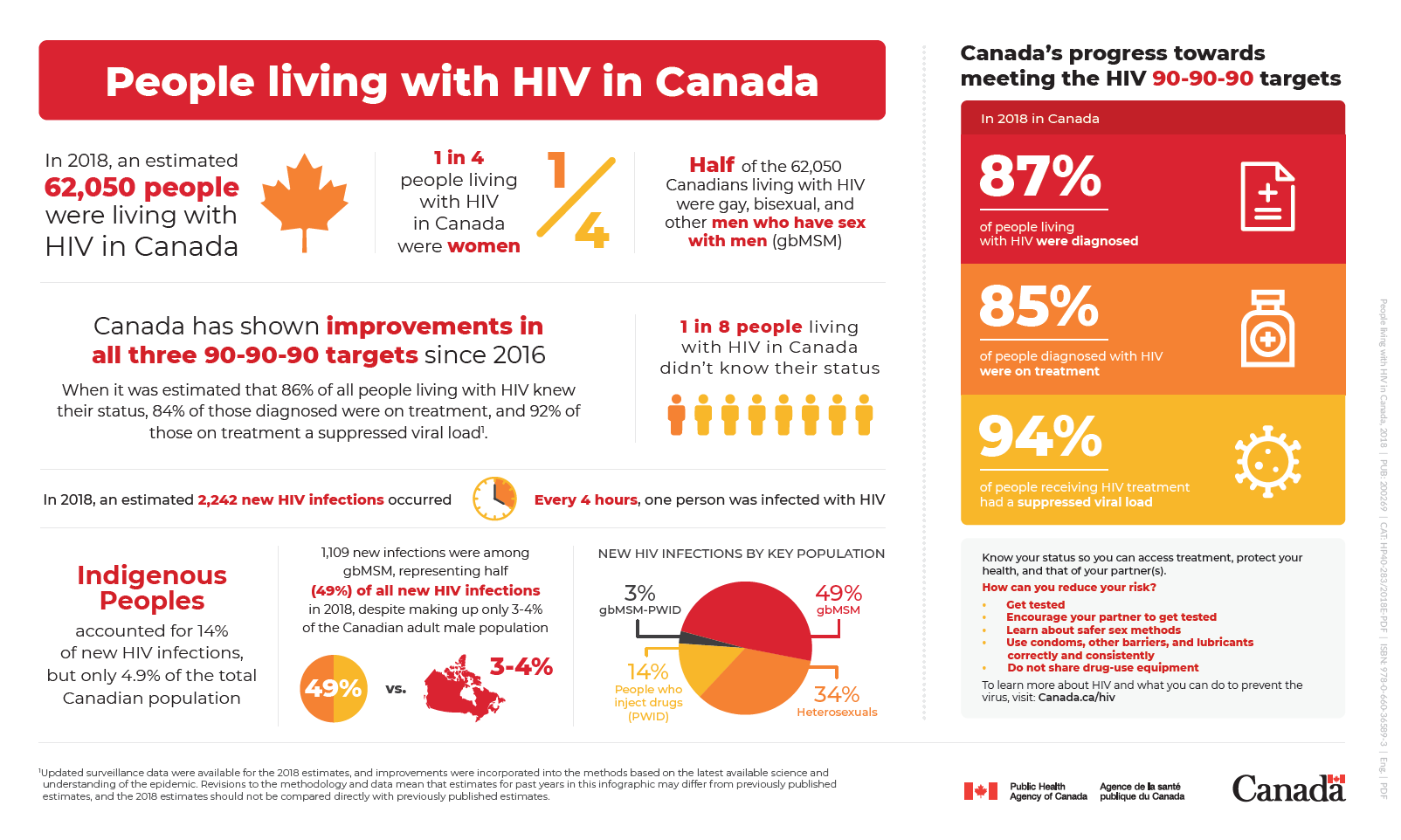People living with HIV in Canada: infographic

Download the alternative format
(PDF format, 575 KB, 1 page)
Organization: Public Health Agency of Canada
Type: Infographic
Published: 2020-12-01
Related Topics
In 2018, an estimated 62,050 people were living with HIV in Canada
- 1 in 4 people living with HIV in Canada were women
- Half of the 62,050 Canadians living with HIV were gay, bisexual, and other men who have sex with men (gbMSM)
Canada’s progress towards meeting the HIV 90-90-90 targets
- 87% of people living with HIV were diagnosed
- 85% of people diagnosed with HIV were on treatment
- 94% of people receiving HIV treatment had a suppressed viral load
- 1 in 8 people living with HIV in Canada didn’t know their status
- Canada has shown improvements in all three 90-90-90 targets since 2016.
- When it was estimated that 86% of all people living with HIV knew their status, 84% of those diagnosed were on treatment, and 92% of those on treatment a suppressed viral loadFootnote 1.
In 2018, an estimated 2,242 new HIV infections occurred
- Every 4 hours, one person was infected with HIV
- Indigenous Peoples accounted for 14% of new HIV infections, but only 4.9% of the total Canadian population
- 1,109 new infections were among gbMSM, representing half (49%) of all new HIV infections in 2018, but only make up 3-4% of the Canadian adult male population.
New HIV infections by key population
- gbMSM – 49%
- Heterosexuals – 34%
- People who inject drugs (PWID) – 14%
- gbMSM-PWID – 3%
Know your status so you can access treatment, protect your health, and that of your partner(s).
How can you reduce your risk?
- Get tested
- Encourage your partner to get tested
- Learn about safer sex methods
- Use condoms, other barriers, and lubricants correctly and consistently
- Do not share drug-use equipment
To learn more about HIV and what you can do to prevent the virus, visit: Canada.ca/hiv
- Footnote 1
-
Updated surveillance data were available for the 2018 estimates, and improvements were incorporated into the methods based on the latest available science and understanding of the epidemic. Revisions to the methods and data mean that estimates for past years in this infographic may differ from previously published estimates, and the 2018 estimates should not be compared directly with previously published estimates.